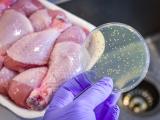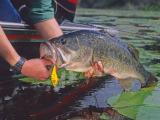Editor's note: This story was revised Mar 13 to list the correct title for Nega Beru, PhD, director of the Office of Food Safety in the FDA's Center for Food Safety and Applied Nutrition.
March 12, 2007 (CIDRAP News) – The US Food and Drug Administration (FDA) today released final guidance on voluntary food safety procedures for processors that handle fresh-cut fruits and vegetables, including ready-to-eat spinach and other leafy greens that have been the subject of recent national Escherichia coli O157:H7 outbreaks.
The document urges processors to institute risk-based food safety programs based on the Hazard Analysis and Critical Control Point (HACCP) model used by other food industry segments, according to an FDA press release. HACCP plans detail procedures for identifying points in food processing where contamination can occur and taking preventive steps.
Though the FDA has already issued "good manufacturing practice" regulations for the food industry, the new guidance document represents the first recommendations specifically for the fresh-cut produce industry, the FDA said. The final guidelines incorporate feedback provided by stakeholders after the initial draft was released in March 2006.
"The main focus is on prevention, and it's important to take a scientific, risk-based approach," said David Acheson, MD, director of the office of Food Defense, Communication, and Emergency Response at FDA's Center for Food Safety and Applied Nutrition (CFSAN), at an FDA press conference today. "There's a clear need to better understand how and why contamination gets onto fresh produce and how to prevent that."
Nega Beru, PhD, director of CFSAN's Office of Food Safety, told reporters that fresh-cut fruits and vegetables are the fastest-growing facet of the produce industry and that from 1996 to 2006, 25% of foodborne illness outbreaks were linked to the sector. He said the high degree of handling involved in harvesting, processing, and packaging fresh-cut produce places the products at high risk.
The types of products addressed by the guidelines include not only leafy greens, but also items such as shredded lettuce, sliced tomatoes, peeled baby carrots, cut melon, and sliced pineapple.
The 41-page document addresses five main areas: worker health and hygiene, training, buildings and equipment, sanitation operations, and production and processing controls. It also provides recommendations on recordkeeping, recalls, and product tracebacks.
Beru said the guidelines urge fresh-cut fruit and vegetable processors to ensure that growers are following good agricultural processes.
The FDA guidance drew criticism from at least one member of Congress. Rep. Rosa DeLauro, D-Conn., said in a press release today that the FDA's guidelines maintain the status quo for the safety of fresh-cut produce.
"At a time when the country is experiencing numerous foodborne outbreaks, and the industry is looking for the government's help to repair their image, it is disappointing that the FDA issues a nonbinding, voluntary guidance document that does nothing and tells growers what they already know," she stated.
DeLauro, along with Sen. Dick Durbin, D-Ill., in February renewed an effort to consolidate federal food safety oversight by reintroducing the proposed Safe Food Act.
See also:
FDA guidance for fresh-cut fruits and vegetables
http://www.fda.gov/Food/GuidanceRegulation/GuidanceDocumentsRegulatoryInformation/ProducePlantProducts/ucm064458.htm
Mar 12 FDA press release
http://www.fda.gov/NewsEvents/Newsroom/PressAnnouncements/2007/ucm108865.htm
Mar 3, 2006, CIDRAP News story "FDA offers guidance to make fresh-cut produce safer"

















